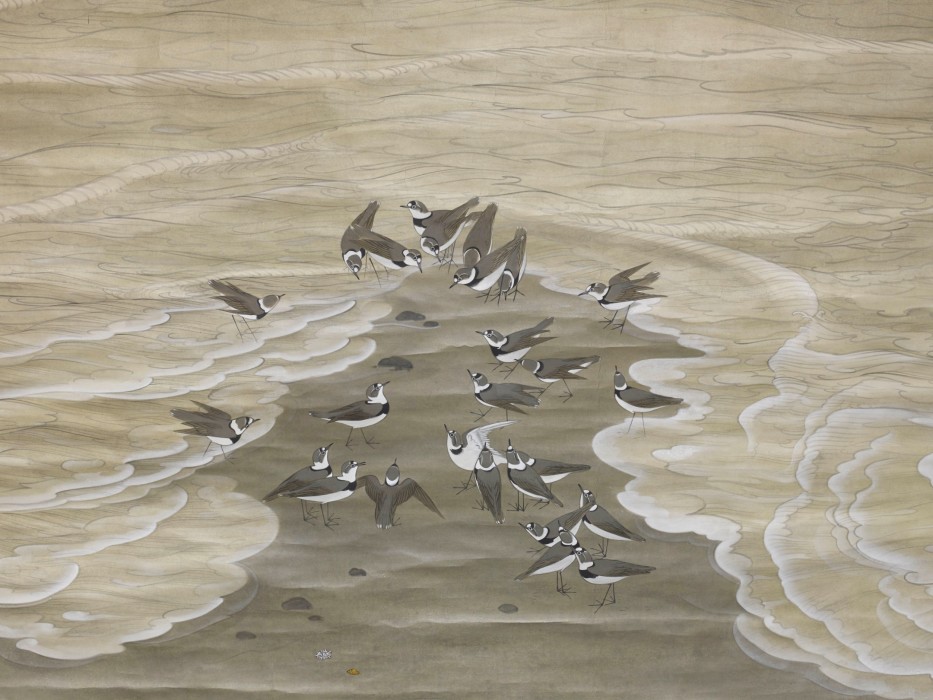Product Description
7182 Hyakunyo Jihō (1731 – 1804)
A kakemono (hanging scroll) painted in ink with a seated skeleton and calligraphy
Inscribed:
Vow your devotion to Shakyamuni Buddha and Amida Bodhisattva. You must not be frightened by the ebbing of Kalpa (Aeon) and the many Sufferings, nor should you wish for Ease and Comfort. Beware of the approaching threat of kataku (the Burning House) as no day passes in which smoke does not rise from bodies being cremated and burnt to ashes.
Signed: Hyakunyo
Seals:
Right: Senkai sambō (one thousand worlds, a room in a mountain)*
Left upper: Jihō
Left lower: Ji
Japan 18th century Edo period
Dimensions:
Scroll: H. 181cm x W. 30cm (71½” x 12″)
Painting: H. 105.5cm x W. 27.5cm (41¾” x 11″)
The inscription on this scroll refers to the kataku (burning house) otherwise known as the Three Carts and the Burning House parable. It is one of seven parables featured in the third chapter of the Lotus Sutra entitled Simile and Parable.
The Lotus Sutra was first translated from Sanskrit in Chinese in 286 before expanding and influencing the rest of East Asia. It is one of the most influential Buddhist scriptures on which teachings the Japanese Tendai and Nichiren Buddhist sects were established. For many East Asian Buddhists, the Lotus sutra contains the ultimate and complete teaching of the Buddha. It clearly and definitively reveals the Buddha nature as an integral part of the lives of all people and makes clear that the Buddha desires and acts so that all people may attain the state of Buddhahood for themselves by opening up this Buddha nature inherent within them.
The Three Carts and the Burning House parable is cited by Buddha to his disciple named Shariputra to explain the use of similes, parables and other expedient means to preach the Buddhist Law and help all people attain supreme perfect enlightenment.
The main character in this parable is a very wealthy old man who lives in an immense but decaying mansion with only one gate and has many children living with him. One day his house catches fire and quickly engulfs the whole building. In the meantime, all his children were playing inside totally absorbed by their game, unaware of the imminent danger approaching. Their father, who was outside the house, tried to warn them and ordered them to come out at once but to little success; the children showed no understanding of the danger and continued playing. On his second attempt to save his children, the rich man lured them out by promising the three kinds of animal-drawn carts the youngesters had always wanted. He said he had goat, deer and ox-drawn carts waiting for them outside the house to play and that they should hurry out. Hearing this they rushed out and escaped the fire.
Nevertheless, once his sons and daughters were outside the father presented each one of them with a cart of identical size, quality and greater value than the ones originally promised. They were adorned with fine rare jewels, covered by canopies, lined with carpets and cushions; each carriage was drawn by a handsome and strong white ox attended by an array of servants.
Buddha then asks his disciple if this rich father can be held responsible for lying to his children and not keeping his word and they both conclude that it is perfectly agreeable to use white lies to awaken people and help them attain Buddhahood.
This parable is heavy with analogies and symbolisms where the burning house is the world and the flames are the sufferings of birth and death. The rich man stands for the Buddha who appears in this troubled world to save people, the children are all living beings and the games in which they are so absorbed in are worldly pleasures. The three kinds of carts originally promised represent the three provisional pre-Lotus sutra teachings, and the great white ox-drawn cart symbolizes the supreme vehicle of Buddhahood which is the Lotus Sutra.
Hyakunyo Jihō (1731 – 1804)
Hyakunyo was born in Omi-cho of Shiga prefecture and entered the Tendai sect complex on Mount Hie where he spent most of his adult life before returning to his home at Omi-cho. After his return he built a small temple and became an important part of the local community. Hyakunyo often painted for his supporters as a token of his gratitude.
Works by the artist can be found in the collection of: the James and Marilynn Alsdorf Collection, USA
*Alludes to the Zen ideal of hermit life.










